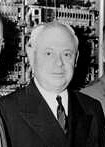- unknown (b.)
Bio/Description
A prolific IBM inventor, in May 1939 he was assigned to serve as chief engineer (and Howard H. Aiken's chief contact) for the Automatic Sequence Controlled Calculator ASCC (MARK I) project, a large-scale digital calculator, which was developed and built by IBM during World War II. He was considered by Aiken to be his co-inventor along with Frank E. Hamilton, and Benjamin Durfee. Progress on the ASCC at IBM's North Street Laboratory in Endicott, N.Y., was slowed by other wartime demands, but the machine eventually was shipped to Harvard in February 1944, assembled and formally presented to the university on August 7 of that year. By then, IBM had spent approximately $200,000 on the project and donated an additional $100,000 to Harvard to cover the ASCC's operating expenses. He was an important contributor to IBM's growth in the early decades of the company's existence. For example, he developed and introduced the first Type 1 Total Printing and Listing Tabulator in the early 1920s. This machine became the prototype for many important subsequent improvements. He and his staff developed such machines as the Type 512 and 513 high-speed reproducers, and many related technological functions, such as summary punching. In addition to his machine inventions, he was responsible for developing the 80-column punched card, related sensing or punching apparatus, low-cost wire contact relays and unit counters. He also developed a telephone key punch used in telephone record keeping.
-
Gender:
Male -
Noted For:
As chief engineer at IBM, he co-developed the first Type 1 Total Printing and Listing Tabulator and was one of the co-inventors of IBM’s MARK I -
Category of Achievement:
-
More Info:


